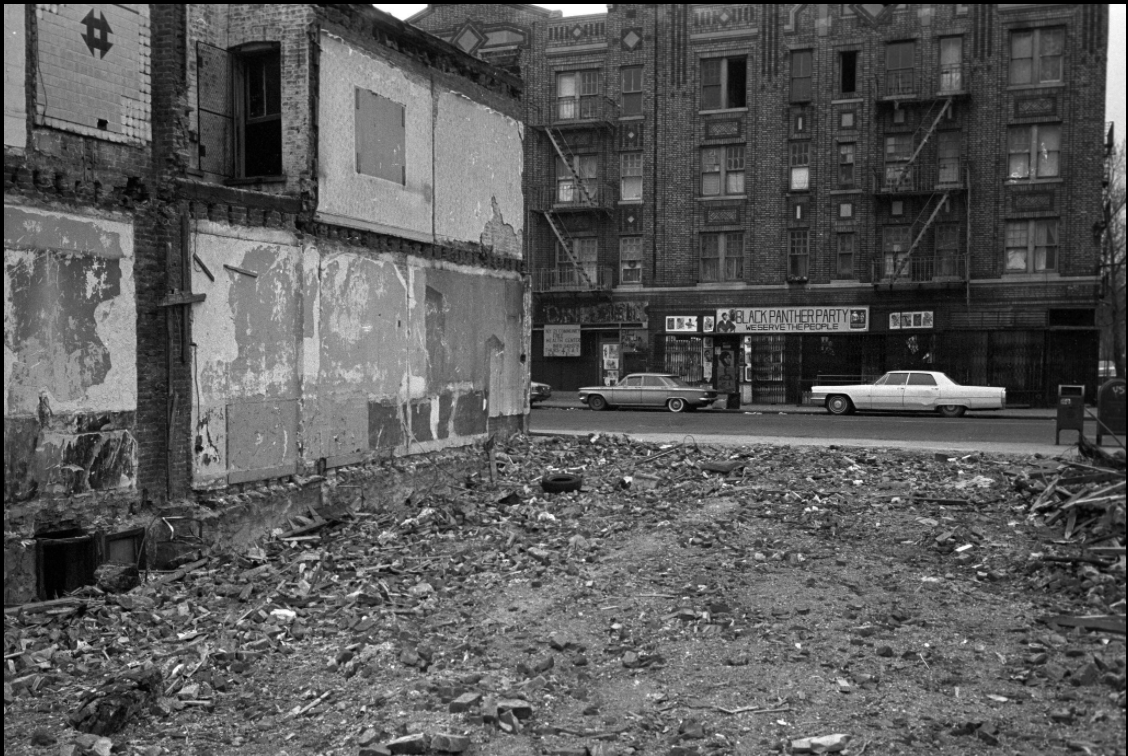The Black Panther Party, originally the Black Panther Party for Self-Defense, was a revolutionary black nationalist and socialist organization founded by Bobby Seale and Huey Newton in October 1966.
The Black Panthers’ engaged in armed para-militant patrolling and monitoring of the behavior of the Oakland Police Department, challenging police brutality. Starting in 1969, community social programs became a predominant activity of the party. One of the largest programs the Black Panthers engaged in was the Free Breakfast for Children Program, providing breakfast for impoverished children so they could do their best in school.
The FBI Director J. Edgar Hoover, however, called the party “the greatest threat to the internal security of the country.” The FBI lead a counterintelligence program (COINTELPRO) of surveillance and infiltration in attempts to incriminate party members to discredit the organization.
On October 28, 1967, Huey Newton killed Oakland police officer John Frey during a traffic stop. In the encounter Newton and backup officer Herbert Heanes also suffered gunshot wounds. The Black Panther party’s “Free Huey” campaign, in the wake of Newton’s death, garnered a lot of support from the African American community and Leftist groups.
On April 7, 1968, in the wake of the Martin Luther King Jr. assassination, Black Panther Party members planned a deliberate ambush of police officers. This encounter led to the death of 17-year-old Bobby Hutton. His death became a rallying issue for Panther supporters.
The impact the Black Panther Party had on society, or even on their local environment, has been a subject of debate.
Author Jama Lazerow writes:
As inheritors of the discipline, pride, and calm self-assurance preached by Malcolm X, the Panthers became national heroes in black communities by infusing abstract nationalism with street toughness—by joining the rhythms of black working-class youth culture to the interracial élan and effervescence of Bay Area New Left politics … In 1966, the Panthers defined Oakland’s ghetto as a territory, the police as interlopers, and the Panther mission as the defense of community. The Panthers’ famous “policing the police” drew attention to the spatial remove that White Americans enjoyed from the police brutality that had come to characterize life in black urban communities.”
ADVERTISEMENT - CONTINUE READING BELOW
Journalist Hugh Pearson, in his book Shadow of the Panther: Huey Newton and the Price of Black Power in America, links Panther criminality and violence to worsening conditions in America’s black ghettos as their influence spread nationwide.
The Black Panthers Ten-Point Program:
- We want freedom. We want power to determine the destiny of our Black Community.
- We want full employment for our people.
- We want an end to the robbery by the white men of our Black Community. [Later changed to “We want an end to the robbery by the capitalists of our Black and oppressed communities.”)
- We want decent housing, fit for shelter of human beings.
- We want education for our people that exposes the true nature of this decadent American society. We want education that teaches us our true history and our role in the present-day society.
- We want all Black men to be exempt from military service.
- We want an immediate end to POLICE BRUTALITY and MURDER of Black people.
- We want freedom for all Black men held in federal, state, county and city prisons and jails.
- We want all Black people when brought to trial to be tried in court by a jury of their peer group or people from their Black Communities, as defined by the Constitution of the United States.
- We want land, bread, housing, education, clothing, justice, and peace.

ADVERTISEMENT - CONTINUE READING BELOW

ADVERTISEMENT - CONTINUE READING BELOW

ADVERTISEMENT - CONTINUE READING BELOW

ADVERTISEMENT - CONTINUE READING BELOW

ADVERTISEMENT - CONTINUE READING BELOW

ADVERTISEMENT - CONTINUE READING BELOW

ADVERTISEMENT - CONTINUE READING BELOW
ADVERTISEMENT - CONTINUE READING BELOW

ADVERTISEMENT - CONTINUE READING BELOW

ADVERTISEMENT - CONTINUE READING BELOW

ADVERTISEMENT - CONTINUE READING BELOW

ADVERTISEMENT - CONTINUE READING BELOW

ADVERTISEMENT - CONTINUE READING BELOW

ADVERTISEMENT - CONTINUE READING BELOW

ADVERTISEMENT - CONTINUE READING BELOW

ADVERTISEMENT - CONTINUE READING BELOW

ADVERTISEMENT - CONTINUE READING BELOW

